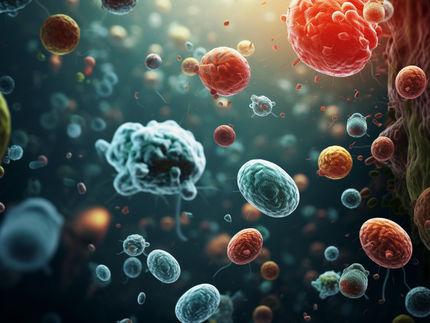Food poisoning by Salmonella in lettuce plants can be avoided
Can lettuce grown on soil infected by Salmonella bacteria itself be infected? Michel Klerks, scientist at Plant Research International, part of Wageningen UR, discovered that Salmonella bacteria spread on the plant as well as within the plant. Internal reproduction and spreading increase the risk of food poisoning through lettuce consumption. Prevention of Salmonella infection in lettuce plants and the application of molecular detection methods during routine screening for pathogens in the food production chain can reduce the risk of food poisoning by eating contaminated fresh leafy vegetables. This is the subject on which Michel Klerks will take his doctoral degree at Wageningen University.
Klerks investigated the physiological and molecular interactions between Salmonella bacteria and lettuce varieties. He discovered that Salmonella can actively move to the roots of the lettuce plant. The bacterium then reproduces and spreads itself on the plant. Spreading of the bacterium does not lead to visible differences between healthy and infected soil-grown plants. The natural defence mechanism of lettuce, however, is activated during this process. Interesting fact is that Salmonella was not only found on the plant but also within the plant itself.
In the field lettuce can be infected by using manure contaminated by Salmonella- and E. coli bacteria. Earlier research has shown that the risk of Salmonella infection can be reduced by decreasing the amount of pathogens in dairy cattle manure. This can be achieved by feeding cattle more hay or straw. Breeding new lettuce varieties that are resistant against the pathogens may further reduce the risk of infection. Hygienic measures after harvest are of little use because washing does not remove the bacteria from internally infected vegetables.
In his research Klerks also focussed on the development of more sensitive and more accurate molecular detection methods to determine small numbers of Salmonella bacteria and pathogenic E. coli bacteria. Testing manure or infected soil for the extent of Salmonella and/or E. coli infestation before seedlings are planted out enables a good estimate of the risk of crop contamination. The methods can also be applied after harvest in the routine diagnosis of these pathogens in the food production chain. The analytical time required for testing food products by means of molecular methods is reduced to two days whereas current standard procedures require five days.
Most read news
Other news from the department science

Get the analytics and lab tech industry in your inbox
From now on, don't miss a thing: Our newsletter for analytics and lab technology brings you up to date every Tuesday. The latest industry news, product highlights and innovations - compact and easy to understand in your inbox. Researched by us so you don't have to.




![[Fe]-hydrogenase catalysis visualized using para-hydrogen-enhanced nuclear magnetic resonance spectroscopy](https://img.chemie.de/Portal/News/675fd46b9b54f_sBuG8s4sS.png?tr=w-712,h-534,cm-extract,x-0,y-16:n-xl)



















































